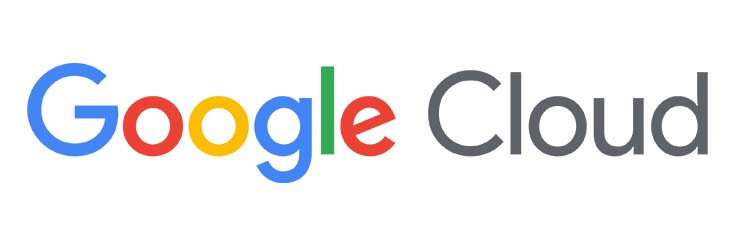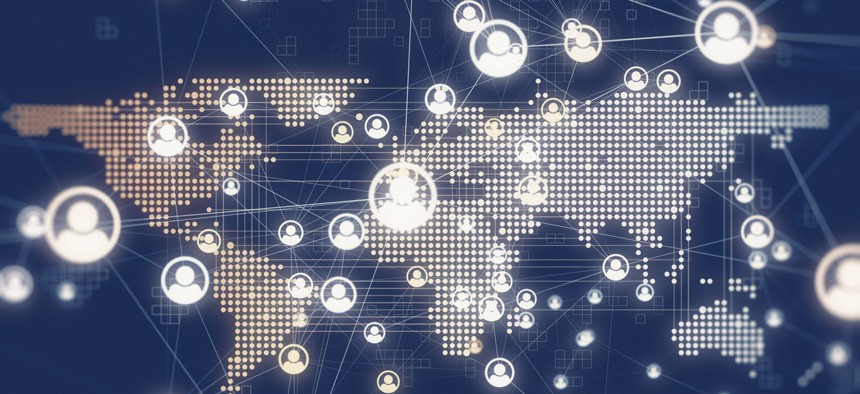How Agencies Can Foster Inclusion in the Remote Workforce
As hybrid work skyrockets across the globe for the federal workforce, agencies must adopt new technologies and tools to facilitate a productive and inclusive workplace — and achieve mission success.
Presented by
Google Cloud

As the government workforce settles into hybrid work, it is now commonplace for employees to be scattered across the state, country and even the world. Teams everywhere are adjusting to the new normal of collaborating across time zones, meeting via video conference instead of face to face, and bandwidth limitations. It is imperative that these shifting dynamics don’t slow down collaboration, innovation or productivity. Real-time communication tools, engaging meetings, and small changes can create an inclusive environment that brings forward the best of the workforce without logistics getting in the way.
Fostering Inclusive Collaboration
When the pandemic began, many agencies quickly adopted video conferencing technology to fill the communication gap. While those technologies are still widely in use, they are not always able to provide the broad capabilities needed to communicate to get work done effectively. Jeff Brown, the North American Workspace Lead for Google Cloud Public Sector, notes that their formats can still cause hybrid or remote work environments to feel disjointed, especially in meetings or conferences.
It’s common for international or long-distance employees to be sitting at home staring at colleagues talking in a conference room potentially thousands of miles away, and feeling distanced from the conversation.
“At first it was just the need to see someone as you spoke to them,” he says. “What I'm seeing change is the need for employees to work more effectively in an inclusive hybrid scenario where everyone feels fully engaged at all times, rather than just looking at each other in boxes on a screen.”
To address this challenge, Google Workspace launched Companion Mode in September 2021 as a way to seamlessly connect those in the room with their remote counterparts, giving everyone access to interactive features like joint note taking, hand raising, polls and Q&A forums.
“Companion Mode allows everyone to feel like they are in the conference room: use all the widgets and engage with everyone,” says Brown. “Being a contributing part of the meeting is what companies are now trying to embrace for their employees.”
Unifying the Global Workforce
Today’s workforce can no longer rely on a single unified point — the physical location or office — to enable collaboration, communication and rally coworkers around a common goal. In addition to staff that are working from different cities, counties or states, more than 55,000 federal employees work abroad as military personnel, embassy employees and diplomats. With dispersed staff, it is more critical than ever for agencies to foster a collaborative environment, says Brown.
“When you are working with employees, you must be inclusive and accessible,” he notes. This means agencies will need to think ahead to help international employees, those across different U.S. time zones, or with special work schedules to simply and effectively communicate their work schedules and availability. Brown notes that the ability to set individual working hours based on time zone can help foster respect, mindfulness and ensure meetings can be scheduled efficiently — without the need for the team to spend valuable time working out schedules and availability. Google Workspace has flexible, effective and user-friendly ways for team members to share not only their availability, but also information such as where the individual will join the meeting from.
“Whether employees are working from home, remotely, traveling or need flexible time, that information is all encapsulated into Google Workspace’s calendar,” says Brown. Members within the same organization can then view this information to make informed communication decisions.
Google Workspace also works to foster communication equity through a variety of cost-effective, secure translation tools. Google Meet translated captions, for example, provide real-time translation so those who speak different languages can instantly be a part of the conversation.
“Translated captions in Meet are being used by U.S. diplomats and other embassy personnel all around the world,” says Katie Tobin, head of Google Workspace innovation for Google’s Public Sector team. “They can collaborate 24/7 over chat, phone and video calls, and audio messages.”
Tobin also cites Google Voice as an effective tool, for instance, for overseas-based employees to quickly call into meetings because it provides a U.S. phone number to customers at any location.
“If you have a Google Voice number set up in the U.S., and you take it overseas, you still have a +1 phone number, allowing you to make calls to and from the U.S. without having to pay international fees,” she explains. “Google Workspace tools like this reduce friction and stress for international employees.”
Ensuring All Employees Are Heard
As agencies continue to strategize for the future and consider new technologies to improve collaboration, Tobin states that it is important to identify the individual needs of the organization and its employees.
“Talk to your workforce and figure out where technology has the greatest potential for impact, and that might be a good spot to start,” she says. “Are they trying to keep track of different versions of documents? Find times to meet? Collaborate in real time? Friction and frustrations often lead to workarounds–sometimes bypassing security processes and putting data at risk.”
When it comes to Google Workspace, inclusive, effective collaboration is already built-in with no workarounds needed. While it can be stressful to change business processes, Tobin recommends making small, incremental changes. For example, if remote staff are feeling disengaged, spend a few weeks conducting team meetings with Companion Mode. Then, after the trial period, evaluate, make needed changes, and move on to the next challenge.
Ultimately, this is a chance for organizations to create a more inclusive and equitable workforce.
“It’s important for agencies to think about change in small doses. Adopting new technology can be small and incremental, and happen in a matter of weeks –not months. Having that mindset will help government leaders tackle any obstacles one at a time and ultimately feel really good about the transition that you make.”
Learn more about how Google Workspace can help you create a more collaborative, productive workplace.
This content is made possible by our sponsor. The editorial staff was not involved in its preparation.
NEXT STORY: The Ultimate Checklist for Onboarding a SaaS Vendor







